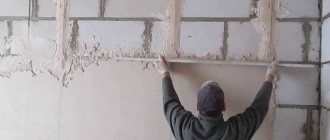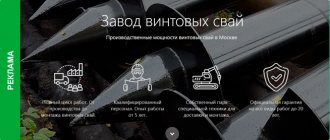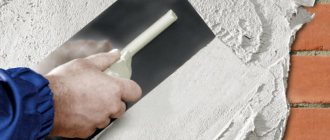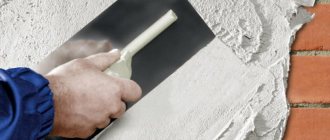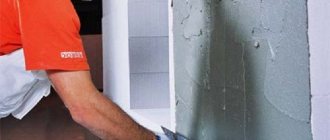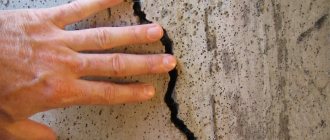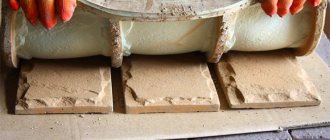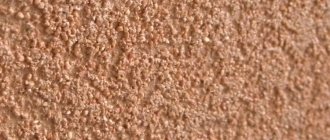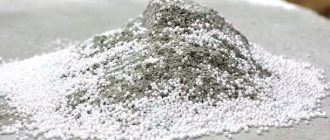Usually, beginners have difficulty choosing what is suitable for leveling walls: gypsum or cement plaster. Indeed, in order to correctly decide which plaster to choose for the kitchen or bathroom (moisture-resistant plaster is required), you need to clearly understand what the difference is between these materials, and in what conditions which is preferable.
What is plaster used for?
The modern market offers a wide range of binding solutions for cladding walls and ceilings. The basic components in them are gypsum, clay, lime or cement. Combining these substances with additives creates many modifications. Despite the wide variety, gypsum and cement plaster traditionally remain the most popular.
Depending on the main purpose, binders are divided into 2 conditional groups:
- simple plaster - used for rough work;
- decorative coating - tint mixtures for finishing surfaces.
With the help of plaster solutions, many construction problems are solved:
- alignment of vertical and horizontal surfaces;
- sealing seam joints in masonry made of brick, foam blocks, aerated concrete and other piece materials;
- insulation of walls and ceilings;
- improved sound insulation;
- strengthening fire safety of premises.
This is interesting: Consumption of bark beetle plaster per 1 m2
Lifehacks: the best way to plaster a brick wall
Assessing the advantages of gypsum and cement plaster, our experts simultaneously gave several useful recommendations on how best to plaster a brick wall.
Tip 1
Contrary to the opinion that it is necessary to plaster walls in cloudy weather, they are sure that it is better if there is sun, but the air temperature is within 5-30 degrees above zero. It is also a proven fact that plaster dries better in the heat, but this will not benefit the surface, which is guaranteed to crack in the near future.
Tip 2
To improve the strength of cement plaster applied manually or by machine, it is necessary to use a hardener in an amount of 1-2% of the total volume of the mixture. To make the surface look perfect, it is necessary to apply a layer of the same thickness over the entire surface.
Tip 3
When asked about the possibility of laying bricks on gypsum plaster, the builders answered unequivocally in the negative. Gypsum has a different composition from the cement mixture used in bricklaying, and it can also be easily removed from the wall surface. It is better to lay the brick on top of cement-sand plaster, while both gypsum and cement mixtures are not suitable for laying ordinary bricks.
Types of compositions
Leveling with a plaster mixture occurs before finishing the surfaces. The areas of application can be different, this includes the need to level the surface as much as possible, and ensuring fire safety, and heat conservation of the room, and its sound insulation. The choice of compositions is quite wide. They are used for both external and internal work when processing walls and ceilings.
There are such types of plaster, differing in the layer of application, such as:
- the main coating, which is applied during rough finishing work;
- decorative plaster, including compositions for finishing.
Classification by composition divides the mixture into four main groups, each of which is based on a specific substance. These are lime, gypsum, cement and clay. Naturally, these groups are not the only ones that exist. The range of mixtures is varied; they can be created by mixing the base and adding impurities. However, the most popular solutions are those based on cement and gypsum.
Subtleties of preparing mixtures
The initial stage in any repair work is the preparation of the necessary compounds and tools. The first step is mixing the dry ingredients, the second is adding water.
The preparation of each plaster has its own nuances:
- The powdery components of cement plaster (cement and sand) are combined first. Only after thorough mixing can water be added to them. Then it all mixes well until smooth. It will not be difficult to prepare plaster, which will contain both gypsum and cement. This solution will dry faster, but will become less durable.
- Preparing gypsum plaster takes literally five minutes. First, the gypsum is brought to the consistency of dough, and then, if necessary, water is added to obtain exactly the density that is needed.
Self-preparation of the solution
There are three main types of material that can be made at home:
- With sawdust. 4 parts gypsum, 1 part sawdust, 1 tile adhesive.
- Gypsum-chalk solution. 1 part gypsum, 3 parts crushed chalk, 5% wood glue of the total mass of the mixture.
- Lime-gypsum mortar. 1 part gypsum, 1 part lime paste.
The cooking rules are as follows:
- Measure portions of components using special containers.
- Mix dry ingredients.
- Add a little water and mix with a construction mixer or drill with an attachment.
- Leave to sit for 3 minutes, then stir again.
To prepare the solution, you should have a construction mixer or drill with a special attachment on hand.
On a note! These instructions are suitable for store-bought mixtures and those prepared manually from dry ingredients. For lime-gypsum mortar, gypsum is first soaked in water, mixed, and then added to the lime dough.
How to use?
When studying the positive and negative characteristics of the compositions, you need to pay attention to which of them will be more convenient in each specific case, and whether additional materials will be required during repair work.
Gypsum plaster has virtually no disadvantages. But if the work speed is insufficient, the prepared solution may dry out, and you will have to make a new one. And the price of this material is not low. Therefore, if you have no experience, it is best to make the solution in small batches. This may not save time, but you can be sure that all the plaster will be used and not wasted.
When cementing the surface, the installation of reinforcement is required. The solution takes a long time to dry. Therefore, you can safely dilute a large volume and cover large areas at once.
There is one more important tip. Work must be carried out at positive temperatures starting from five degrees. Preliminary use of a deep penetration primer is mandatory. Before applying the next layer, you must allow the previous one to dry completely.
Each method and solution has its own advantages. Reviews also speak about this. Those who begin renovations are already, as a rule, familiar with the characteristics of the materials they plan to use. Therefore, there are no surprises.
Some note that external work is carried out easily and quickly thanks to the cement mortar. The drying time pays off in that this treatment will last a long time. Others share their experience of applying gypsum plaster in rooms, and at the same time praise it for the fact that after its application, any manipulations can be done with the walls, provided that the entire technological process is followed.
The paint goes on perfectly. The wallpaper does not bubble or fall off. And this is a very important factor.
Ready mixes
You can make the plaster mortar yourself or purchase a ready-made mixture. Van will only need to add water to get a ready-to-apply product. It is not surprising that most novice builders prefer to choose this option.
Ready-made mixture for walls eliminates errors when mixing components. You will never confuse the proportions due to ignorance of the specifics of using a particular brand of cement for plastering walls with mortar. Therefore, if you do not have extensive construction experience, it is best to choose a ready-made mixture for finishing.
As an example of a finished substance for wall finishing, consider KNAUF-Rotband. The material is produced by one of the most respected construction brands. Therefore, the price per bag is appropriate. Now you can find bags with the following weight:
- 5 kg,
- 10,
- 25,
- 30.
The choice is quite large, so you can choose the packaging that is ideal for your needs. This wall treatment substance is made in Germany. Moreover, the company has been improving its product over the past 50 years. It is not surprising that KNAUF-Rotband is well known throughout the world.
Attention! An important feature of KNAUF-Rotband is its optimal density for plastering work.
The company's product range also includes other gypsum-based substances. But their density is too high to apply materials to the ceiling. Therefore, most builders prefer KNAUF-Rotband.
The substance has the following characteristics:
- Provided that the layer thickness is one centimeter, the consumption of the substance per square meter will be eight and a half kilograms.
- The maximum possible layer thickness is five centimeters. The only exception is the ceiling. Plaster of more than 1.5 cm cannot be applied to it.
- Professional builders do not make the KNAUF-Rotband layer thinner than half a centimeter.
- In seven days the substance hardens. But this time period largely depends on humidity.
- The product is excellent for finishing walls made of different materials. Most often it is used when it is necessary to plaster walls or ceilings made of concrete, brick or polystyrene foam.
- KNAUF-Rotband is excellent for application on smooth surfaces. At the same time, the substance does not perform very well when sealing joints on drywall.
- The use of the substance is allowed both in rooms with normal humidity and in bathrooms or kitchens.
- The color of the substance varies over a fairly wide range. You can choose white, gray or even pink. This does not affect the performance characteristics in any way.
- KNAUF-Rotband can be stored for no more than 6 months.
These are the main technical characteristics of a substance, which largely determine the features of its operation. The ready-made solution allows you to avoid finishing the walls with putty. The most important advantage of KNAUF-Rotband is the absence of seams on the walls, even when applying a thick layer of plaster.
Attention! There are many ready-made mixtures. It is important to choose the one that is ideal for your walls.
Purpose and main types of plaster
Regardless of the type, plaster mixtures can perform the following functions:
- surface leveling;
- increasing the noise and heat insulation performance of the structure;
- sealing seams;
- creation of fire protection.
There are many options for classifying plaster, but most often the composition of the mixture is taken as the base. Accordingly, there are types such as gypsum, clay, lime, cement plaster, etc. The most popular are mixtures based on gypsum and cement, so we will talk about them in more detail.
This is interesting: Consumption of plaster per 1 m2 of wall: gypsum, cement and decorative
Description
Speaking about gypsum self-leveling floors, you should not think that they consist of pure gypsum, because... It will be very difficult to make a self-leveling floor from such material. Today, these are materials of the most complex chemical composition, with a bunch of different additives, additives, modifiers, where gypsum is only a kind of binder, a kind of base. Pure gypsum and self-leveling floors made from it have little in common with each other.
It's the same story with cement floors. In this case, the cement, of course, also carries a strength load, and modifiers allow it to “behave correctly” when interacting with water in the solution, as well as “correctly” spread over the surface and harden without forming cracks.
Pros and cons of cement material
The material is based on cement. Additional components are sand and plasticizer, which improves the quality characteristics of the product. Limestone, gypsum, and a gypsum-limestone mixture in different component ratios are used as a plasticizer, so the quality of cement plaster varies.
Modern plaster is strikingly different from that used previously. Initially, cement, sand, and lime were mixed to prepare the composition. But with the development of technology for the production of building materials, the component composition of plaster was modified; it began to include substances that provide plasticity, immunity to moisture, and adhesive ability.
Cement is applied to a brick, concrete, or aerated concrete base. Before application, surface preparation is required: removal of dirt and dust deposits, primer.
The cement composition is used for:
- leveling the surface, hiding defects, adjusting the level;
- correction of the deformed condition of the wall;
- finishing activities in a room where air humidity is high and there are no heating devices;
- exterior finishing.
Characteristics of modern cement composition:
- material consumption when creating a layer of 10 mm – 17 kg/m
2for manual laying, 12 for mechanical laying;
- Complete drying time – up to 4 weeks;
- the degree of shrinkage after drying is 2 mm per meter;
- immunity to moisture – high;
Advantages of finishing material:
- strength, ability to withstand significant weight load;
- long service life while maintaining quality characteristics;
- resistance to moisture penetration, frost, sudden temperature fluctuations, open fire;
- adhesive ability, reliable adhesion to the base;
- versatility of use;
- eliminating the curvature of walls, leveling slopes;
- availability of material, the ability to create with your own hands;
- low cost.
Like any finishing material, cement plaster has disadvantages:
- the likelihood of surface cracking after drying if the application proportions are not met, or if shrinkage of the building occurs;
- the formation of unevenness after drying, the need for leveling;
- complex and multi-stage application process, including surface preparation;
- high material consumption;
- poor adhesion to plastic, wood, painted surfaces;
- the heavy weight of the applied layer, which creates a load on the base;
- Drying takes a long time, hardening takes several days, and complete drying takes about a month.
However, the last minus becomes irrelevant. Well-known manufacturers modify cement compositions, adding plasticizers that accelerate the hardening of the coating, allowing it to dry in a week.
Specifications
The quality of mixtures using gypsum binder is regulated by GOST 31377-2008 . According to this document, the main indicators of dry material include:
- humidity: moisture content is allowed no more than 0.30% of the total mass;
- maximum size of granules (grains);
- volumetric weight: 800-1100 kg/m3 (loose) and 1250-1450 kg/m3 (compacted).
Properties of the prepared solutions:
- water consumption when mixing - 0.6-0.65 l/kg
- mobility: the ability to spread under the influence of its own weight; according to GOST 31376, the diameter of the melted sample of the prepared solution (~600 g) should not exceed 165 mm (±5);
- setting time - at least 90 minutes for machine-applied mixtures and 45 minutes for manual plastering;
- complete drying time - after 5-7 days; this indicator depends on the additives in the mixture and differs among different manufacturers; You can find out exactly how long it takes for the plaster to dry in the instructions on the package;
- ability to retain moisture without allowing it to drain: at least 90%;
- consumption for a layer of 10 mm is 8.5-10 kg/m2 (manual application) and 7.5-9 kg/m2 (machine application).
Properties of gypsum plaster in hardened form:
- compressive strength - 2.5 MPa;
- surface adhesion force - 0.3 MPa;
- density - 950 kg/m3;
- vapor permeability - 0.11-0.14 mg/ppa;
- thermal conductivity - 0.25-0.3 W/m*C;
- shrinkage - does not shrink
Although the vapor permeability (the ability to transmit water vapor) of plastered surfaces is not regulated by GOST, it is also an important technical characteristic that determines the scope of application of the plaster.
When purchasing gypsum mixtures, you should pay close attention to their shelf life. Due to their ability to easily absorb moisture, they cannot be stored for longer than 6 months from the date of release. After this period, their properties change, they begin to clump, and high-quality leveling of walls with them becomes problematic. It is also necessary to pay attention to the tightness of the packaging, which protects against excess moisture - you should not purchase plaster in torn bags.
Choosing a mixture for interior work
When finishing premises, the most commonly used gypsum mixtures are white. When doing interior work, preference is often given to water-dispersion paints, which are more transparent than others. If the foundation tone is dark, you need to cover it up, and this will require applying several layers, which will significantly increase consumption.
When gluing light wallpaper, a white base color is preferable, as it will not show through even through thin material. Therefore, the use of cement compositions for interior decoration is advisable only when covering the wall with tiles.
It must be taken into account that the drying time of a surface treated with cement mortar is twice as long as in the case of gypsum. In general, the period during which the plaster completely dries depends on the thickness of the applied layers.
Selecting a mixture based on base quality
If the base is fairly flat, it would be correct to eliminate minor defects using putty, and then cover it with a small layer of plaster mixture. When working with concrete, one or maximum two layers of the composition are sufficient. If the base is made of foam blocks or polystyrene concrete, it makes sense to use plaster mixtures designed specifically for such work.
It is possible to use adhesive plasters that are made on a cement base. Gypsum compositions are not used for masonry and installation work. For finishing work carried out indoors, on surfaces made of brick and concrete, it would be advisable to use gypsum solutions, and not only.
Use in damp rooms and outdoors
As we have already mentioned, gypsum plaster is capable of absorbing moisture, so its use in wet rooms and especially for facade finishing is not advisable.
If it is necessary to make the gypsum surface moisture-resistant (for example, when preparing to lay tiles in the bathroom), it is coated with a deep penetration primer based on acrylic. Concrete contact soil is ideal for tiles.
Polymer waterproofing mastic, for example, Plitonit Gidroelast, also has good moisture-proof properties. It is applied on top of a thoroughly dried layer of plaster using a brush or roller in several layers. Each of them must be applied after the previous one has dried. Gluing of tiles is allowed only one day after application. It is recommended to fill the outlets of pipes and corners of various structures with the same mastic.
Adviсe
To choose a mixture, you need to take into account the specific tasks for which you plan to use it. It is necessary to evaluate the characteristics of the material, their properties and cost. Comparisons of compositions can be carried out according to certain parameters; their differences from each other are quite significant.
According to consumer reviews, the price of cement mixtures is lower than gypsum mixtures. However, this can be compensated by the absence of the need to putty surfaces when using gypsum.
You need to understand that if you need to use a moisture-resistant gypsum mixture for finishing work, its price will be more expensive than a regular one. However, quality and longer service life in humid conditions will be an undeniable advantage.
In addition, gypsum-based plaster can be applied independently; the process does not require professional skills and does not create difficulties if you follow the recommendations. This is an ideal option for the fastest repairs, as well as for preparing walls for painting and gluing thin wallpaper. Cement plaster is durable and ideal for external work. It must be taken into account that there are restrictions in its use on certain grounds.
If you lack skills in this area, for more competent finishing, it is recommended to entrust it to professional craftsmen.
You can find out more about how to plaster walls with your own hands.
Storage conditions
SGHS have an expiration date. Usually this is 6 months, after which the structure of the SS deteriorates (for Vetonit LR+ the shelf life is 1 year). This happens even when the correct storage conditions are created, which are as follows:
- storage in undamaged manufacturer's packaging (partially protects from moisture);
- The storage room is dry, the air humidity is no more than ???
- compliance with the temperature regime, to which some additives are especially sensitive (there should be no sharp fluctuations and subzero temperatures, since SGHS freeze);
- Kraft bags with mixtures are stored on wooden pallets.
If the age of the SGHS is greater than the expiration date, then it can be used. Make a test batch and determine which characteristics of the mixture have changed. For example, setting time has been reduced. In this case, the batches are made in a smaller volume and used either as a starting solution, or where the strength of the coating is not so important. When setting time decreases, SS can be diluted with water with the addition of ½-1 cup of PVA (or wallpaper glue) per bucket of water.
Gypsum behaves like cement. Its shelf life is ~6 months.
The article provides answers to questions about how to apply, how to level and how to trowel plaster, whether it needs to be primed and many others. Plastering walls with gypsum plaster with your own hands is quite an exciting activity, requiring ingenuity, mobility and observation. In return - the daily pleasure of realizing oneself as a creator, contemplating smooth walls and living in a favorable microclimate.
Comparative characteristics
If you evaluate the quality characteristics of gypsum and cement plaster walls, then the first will have more advantages. Gypsum is easy to apply, creates optimal microclimatic conditions, dries quickly, and is used for decoration. But when choosing which plaster is better - gypsum or cement, they take into account not only the above characteristics, but also the purpose of the finish, the complexity of installation, and the need for additional coating. Gypsum is not a universal finishing material, and in certain cases it is preferable to use cement.
To understand which plaster to choose, you should conduct a comparative analysis:
- Purpose of finishing. In this comparison, cement is universal. It is used for both internal and external finishing work; it is used to cover seams and cover facades. Gypsum is suitable for finishing walls in dry and ventilated rooms. Carrying out external work is impossible, and if you need to finish the walls in a room where air humidity is high, then you cannot do without the use of a waterproofing compound.
- Difficult to install. It is easier to work with gypsum composition. It is flexible, easy to apply, adheres well to any surface, and dries quickly. But due to the speed of drying, you have to work at an active pace, because dried material cannot be used. Cement takes a long time to dry, it is prepared in large volumes, and they work quietly for 2 hours or more. Therefore, the cement mixture is suitable for working on large objects with significant coverage areas. However, it is less plastic and requires measures to improve adhesive properties.
- Possibility of decoration. Which interior plaster to choose—gypsum or cement-sand—depends on the room and the specific purpose of use. If there is a need to level the walls for further decoration, then use plaster. If you plan to finish a basement, garage, or facade, then cement is preferable. If the wall slope is large and a thick layer of material is required, then a cement composition is also chosen. If the surface is slightly deformed and requires a thin layer of plaster to correct it, it is better to use gypsum.
- Base load. To choose which is better - gypsum plaster or cement plaster, be sure to take into account the load of the coating on the wall. Gypsum is lighter, does not weigh down the base, but does not strengthen it either. Therefore, you should not hang shelves, cabinets, or massive decorative elements on a plaster-coated wall. Cement is much heavier and puts stress on the wall, but also makes it stronger. Therefore, heavy pieces of furniture can be hung on a cement-coated wall.
Advantages and disadvantages of gypsum mixtures
Having assessed the advantages and disadvantages of cement plaster, you can move on to studying the properties of gypsum mixtures. Unlike their competitor, they have high adhesion, so they fit perfectly on any surface and do not require additional surface treatment. Gypsum coating does not require additional cladding, as the surface looks perfect.
The consumption of gypsum plaster per square meter of surface is 1.5-2 times lower than in the case of a cement coating, and this relates to the cost of the material. Among the advantages of the cement-sand mixture, many note its low cost compared to its gypsum counterpart, but this issue is controversial, since the price also differs by one and a half to two times, so there is no need to talk about savings. Do not also forget that gypsum coating has good sound and heat insulation properties, unlike a mixture based on cement and sand. But not everything is so good, as it turned out, with gypsum, so I would like to talk separately about the disadvantages of gypsum coatings:
- a surface plastered with a solution based on gypsum powder is not resistant to mechanical damage, and therefore is absolutely not suitable for finishing facades;
- gypsum is afraid of high humidity, and this is also the basis for the use of the material, and it is recommended exclusively for finishing internal surfaces;
- you need to work with gypsum mortar quickly, as it sets quickly, and therefore the mixture is prepared in small quantities, which increases the time required to complete the work;
- Despite the high adhesion, additional finishing of concrete surfaces and application of a primer is required if it is necessary to plaster metal surfaces without waterproofing.
Three types of gypsum plaster are used on the construction site: fine-, medium- and coarse-grained fractions. The fine-grained mixture is applied in a layer of up to 0.8 mm, requires an additional layer, and is used primarily for plastering ceilings. Gypsum plaster of a medium-grained fraction, applied in a layer of up to 5 cm, is the main competitor to cement-sand coatings. The coarse fraction is used to hide significant surface defects, and often for cladding facades, but only if there are good waterproof properties. Rotband gypsum plaster mixtures are very popular.
Features of gypsum plaster
A solution of gypsum plaster is made from a dry mixture, which contains not only gypsum powder, but also various plasticizers. To obtain the required paste-like consistency, the mixture is diluted with water.
Gypsum plaster is applied manually or by machine . As a rule, a perfectly flat surface can be obtained even by applying just one layer of solution.
Gypsum plaster is chosen when necessary:
- carry out interior finishing;
- prepare surfaces for painting (wallpapering).
This mixture is not suitable for exterior finishing, nor is it suitable for use in rooms with high humidity.
Advantages of gypsum plaster
Gypsum plaster has almost twice as many advantages as cement plaster. Let's figure out in order why it is so good.
- Ecological cleanliness . Gypsum mixtures do not contain components hazardous to human health. Their use in residential premises optimizes the microclimate, since gypsum plaster is not as dense as cement plaster, and therefore does not interfere with natural air exchange.
- No shrinkage . This means that the plaster will not crack during the hardening process - one of the important conditions for obtaining a smooth surface.
- Low specific gravity . There are several advantages hidden in this characteristic. Firstly, low weight reduces the load on load-bearing walls, which helps maintain their integrity for a long time. Secondly, this allows you to reduce mixture consumption.
- Plasticity . When applying gypsum compositions, there is no need to use a reinforcing mesh - the mixture is already viscous enough to adhere to the surface without flowing or deforming. In some cases, you can apply plaster in several layers without fear of any consequences.
- Vapor permeability . As noted above, gypsum mixtures are loose and porous. This not only improves the microclimate, but also prevents the formation of fungus and mold on the walls.
- Excellent noise and heat insulation . Gypsum plaster helps retain heat in the room - walls covered with it are never icy. In addition, the walls transmit much less noise.
- High finishing speed . Three days is the normal drying time for gypsum plaster. Only in exceptional cases can this period last up to seven days (for example, if the mixture was applied in several layers).
The use of gypsum plaster can significantly reduce the time of finishing work - compared to a cement mixture, labor costs and material consumption are reduced by at least half.
Disadvantages of gypsum plaster
All the disadvantages of this material are quite conventional and usually do not cause significant inconvenience. We have identified two shortcomings.
- As already mentioned, gypsum plaster is used only for interior decoration, since this mixture does not tolerate excessive moisture.
- The cost of gypsum mixtures is approximately 1.5-2 times higher than cement mixtures.
As a rule, these disadvantages do not play a decisive role when choosing plaster, since the advantages completely compensate for the two small disadvantages.
Features of cement plaster
Over the years, the composition of cement plaster has undergone significant changes. Previously, the mixture was obtained by mixing cement with sand or lime, but gradually many modifications of this traditional composition appeared. New cement mortars have properties such as plasticity, low water absorption, improved adhesion and others.
Cement plaster can be applied to brick, concrete, aerated concrete, etc. Before starting work, the base is prepared: cleaned of dirt and dust, and primed.
Cement plaster is used for both external and internal work:
- leveling walls;
- finishing of rooms with high humidity (kitchen, bathroom);
- finishing of unheated premises or entrances;
- preparation of surfaces that require increased frost resistance.
Advantages of cement plaster
Cement plaster has many advantages, due to which it does not lose popularity among builders even now, with the availability of many similar materials.
- High strength . In terms of this parameter, cement plaster is the undisputed leader. In cases where it is necessary to give the surface maximum strength and reliability, experienced craftsmen always choose cement mixtures - this allows for much less frequent major repairs of the premises.
- Good adhesion . Cement plaster does not require the use of additional means to increase adhesion to the base. In this case, the applied solution will maintain its integrity for a long time.
- Moisture resistance . This property allows the use of cement plaster when finishing rooms with a permanently humid microclimate. This is explained by the fact that the solution has a dense structure - it prevents absorption, thereby perfectly protecting the base.
- Affordable price . As noted earlier, cement plaster contains fairly cheap and accessible components.
Disadvantages of cement plaster
Cement-based solutions are not ideal - we have identified four main disadvantages that do not allow us to call this material universal.
- Cement plaster is incompatible with plastic, painted and wooden substrates.
- The large weight of the mortar creates a serious load on the walls, so before application it is necessary to accurately determine the thickness of the layer - for this purpose special calculations are carried out.
- The application process itself is labor-intensive, as it takes place in several stages.
- In order for the surface to be ready for painting, the plastered walls need to be additionally puttied - this increases the overall finishing time.
- Many cement mixtures take a long time to harden - about 3-4 weeks.
However, the last drawback is now a thing of the past. Large manufacturers of building materials modify cement mixtures using various plasticizers - this allows the solution to harden within a week.
Soundproofing properties of cement and gypsum plasters
The ability of materials to absorb noise is of interest to many users. They would like to finish it and get not only a smooth wall, but also effective protection from “loud” neighbors. If you use standard gypsum or cement mortars , they will not provide good sound insulation. True, the first option has slightly better insulating characteristics compared to the second.
The best choice in this case is special soundproofing materials. They are made on the basis of cement or gypsum. They contain a special filler, which gives the finish some looseness and porosity. This allows it to absorb sound well. The compound layer can be covered with drywall or the final finish can be applied directly to it. If the installation technology is followed, such mixtures are very effective.
What is plaster
The type of work and conditions are of particular importance when choosing a solution. Therefore, before choosing a composition, let’s look at what plaster is. In fact, this is a facing material that not only allows you to level the walls, but also gives them a number of additional qualities such as thermal insulation.
Attention! Also, a layer of plaster can improve the sound insulation of walls.
Plaster is used not only for cladding walls, but also for ceilings. Its composition can be very diverse, but three main components remain unchanged:
- binder,
- filler,
- water.
The performance of the mixture depends on the correct selection of proportions for each of them.
What types of solutions are there?
In most cases, when plastering walls, professionals advise choosing one of the following solutions:
- lime,
- clay mixture,
- lime-clay mortar,
- gypsum + lime,
- lime-cement composition,
- ordinary cement mortar for walls with sand.
It depends only on you which composition to choose. But in order for the choice to be correct, it is necessary to know the additional properties that the components impart. For example, lime imparts viscosity. Moreover, it can be slaked or unslaked, and also differ in color and fraction.
Features of different mixtures
The main disadvantage of lime as a binder for mortar is its low strength. Moreover, this composition takes a long time to dry. Therefore, before choosing it for plastering walls, think carefully about whether it is suitable.
Advice! Experts recommend using lime mortar for plastering walls only in dry, well-ventilated areas.
Quite often, alabaster or gypsum is used when creating solutions. It is immediately worth noting a number of advantages of this mixture for plastering walls:
- strength,
- immunity to water
- high speed of hardening.
This composition is best chosen when minor work needs to be done. For example, if there is a pothole in the wall and you need to quickly cover it up, alabaster is ideal.
Quite often, alabaster is chosen as a filler for lime mortar. As a result, the composition obtained from mixing hardens extremely quickly. It is not surprising that this mixture is used quite often.
Cement mortar is highly durable, so it is used when you need to choose a good composition for plastering walls. It is highly resistant to various weather conditions. Contact with water does not affect it in any way. Moreover, cement can withstand high mechanical loads.
Plaster based on cement-sand mortar is best to choose when it comes to finishing external walls. The same applies to areas where there is high humidity.
Clay is needed when a substance needs to be given additional viscosity. For example, if you need to make a stove and plaster it, there is no better option. The fact is that this mixture becomes very durable when fired.
Sand plays the role of a filler in plaster. However, you have a variety of types to choose from. The main thing is to rely on the composition of the solution. Sand from river banks is considered the most effective. Before adding it to the composition, you need to sift it.
Comparison of gypsum, lime and cement mixtures
To choose the best mortar for plaster, you need to compare the main compositions according to the following characteristics:
- Vapor tightness. The gypsum mixture has an indicator of about 1.12 mg/mchPa, the cement-sand mixture is 0.9, and the lime mixture is 0.11. In fact, the compositions are equal. Therefore, when using one of them as plaster, you do not have to worry about moisture accumulating inside.
- Price. This parameter is of great importance when it is necessary to choose a solution for plastering walls. But simple calculations are not enough here. The fact is that the consumption of different mixtures is very different. Moreover, even their specific gravity is different. But if we take the average, the cost will be approximately the same.
- Hardening time. Cement mortar for plastering walls hardens in two hours, gypsum in one and a half hours. Therefore, if time is valuable to you, it is better to choose the second option.
- Conditions. Cement hardens equally well under almost any conditions. The same cannot be said about lime and gypsum. Therefore, if you have to work in extreme conditions, it is best to choose this one.
- Heat capacity. This is one of the most important parameters if you need to choose a solution for plastering walls. The best performance here is for the cement mixture. In turn, the effectiveness of gypsum plaster is in serious doubt.
These are the main parameters by which it is advisable to compare before choosing a substance for plaster. However, each type of composition has its own unique properties that need to be discussed.
For example, if you decide to choose gypsum plaster, you can do without putty. In many cases, it is enough to use a spatula to get rid of unevenness.
If you decide to choose a gypsum mixture, then keep in mind that not all compositions of this kind have good moisture resistance. Therefore, in rooms with high humidity it is better to use a cement composition.
Advice! Take bathroom plaster as an example. Here you need to choose a cement mortar.
Many professional builders decide to choose cement-lime mortar not only because of its high heat capacity, but also because of its bactericidal properties. Moreover, the composition acquires increased elasticity. As a result, the likelihood of cracks appearing in the plaster is reduced many times.
The unique qualities of cement-lime mortar have found their application in both external and internal plastering of walls. It is especially often chosen when you need to make a high-quality façade.
Clay has now practically ceased to be chosen as a mortar for plaster. But the point is not in its poor binding qualities, but in the fact that it is used when it is necessary to veneer wood or stone.
